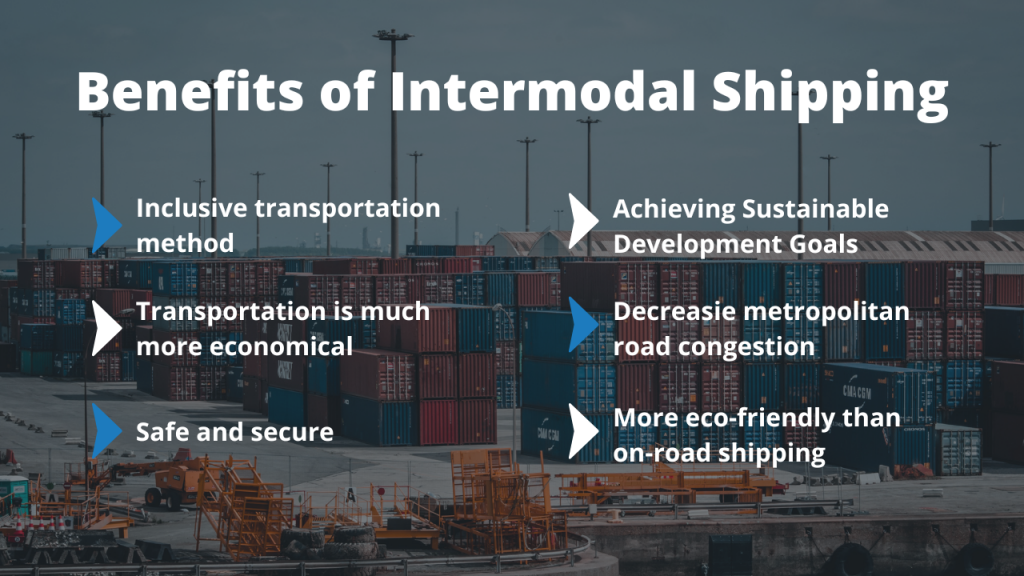Australia is a massive megadiverse country. With a variety of landscapes such as deserts, rainforests,
and mountain ranges spread across the nation, there comes the problem of transportation. While
people can choose different routes as per their convenience, the issue is much more prominent for
freight movement from one side of the country to another.
Freight can be transported through four basic modes: roads, railways, oceans, or air. Unless there is
a ground-breaking invention in logistics and transportation, these are the standard modes that we
have to stick with. For a country so big as Australia, it is challenging to move cargo from one point to
another through just one method. That is why intermodal freight shipping is the most workable
solution for Australia.
What is Intermodal Freight Shipping?
Intermodal freight shipping is a method of cargo movement through various vehicles and
transportation modes across its journey from the point of origin to the point of delivery. Special
containers are designed for intermodal transportation for easy transfer from one vehicle to another,
without the consignment being changed between containers. These containers usually adhere to the
guidelines determined by the International Organization for Standardization. These guidelines allow
freight to be kept in the same container when moved between different transportation modes.
Benefits of Intermodal Freight Shipping to the Australian Economy
Intermodal transportation has gained popularity in areas where a single mode of goods movement is
not feasible or economically viable. In a country with as diverse a landscape as Australia, it is not
only difficult but also extremely foolish to rely on just one method. That is why intermodal shipping
works the best here.
Some of the unparalleled advantages of Intermodal shipping are:
- It is an inclusive transportation method. Unlike multimodal shipping where only one
contractor handles the whole movement and delivery process, intermodal involves multiple
contracts. This may seem tedious but coordination can be achieved easily through proper
planning, and many freight transportation or brokerage companies already have these plans
set in place. More stakeholders are included in the process, implying that more people
benefit from this method.

- Transportation is much more economical in Intermodal shipping. You can easily diversify
your transportation strategy and take advantage of its cost-effectiveness to add value to
your company. - Rail transportation of cargo is becoming increasingly popular in Australia because of its time
efficiency and cost-saving nature. Moreover, it is more eco-friendly than on-road shipping
methods. Intermodal freight has the ability to combine the economic and environmental
benefits of rail with the flexibility of short-haul trucking to strengthen a supply chain’s
transportation network. - It is safe and secure due to the lack of handling of goods during the transportation process.
Special intermodal containers are designed in such a way that the whole container is transferred from one vehicle to another without moving the consignment inside. It allows for lesser damage and wear and tear to the goods. - Switching to intermodal shipping can assist in achieving Sustainable Development Goals and carbon neutrality in the transportation sector significantly. On average, rail transportation is twice as fuel efficient as trucks and trailers. Intermodal shipping can reduce emissions of
carbon dioxide, harmful nitrogenous oxides, and particulate matter by a great margin. - Intermodal shipping is the right solution to decreasing metropolitan road congestion in
major cities across Australia. Port of Melbourne has already begun its plan to enhance rail
connectivity to the busy port which will help in the reduction of the number of trucks on the
Melbourne roads. These trucks cause excessive traffic and burden the city roads.
Intermodal shipping is the best of both worlds – economically efficient and environmentally friendly.
You can not go wrong with this mode of freight transportation. However, it calls for great investment
and strategic planning to achieve the desired levels of connectivity. Coordinated efforts and zeal to
progress are necessary.
Nonetheless, going forward, intermodal freight shipping will become the pivot of freight movement
in Australia. Multiple plans for greater rail connectivity and a robust transportation landscape are
already underway. Intermodal is not just an alternative, but the primary solution that the country
needs.

